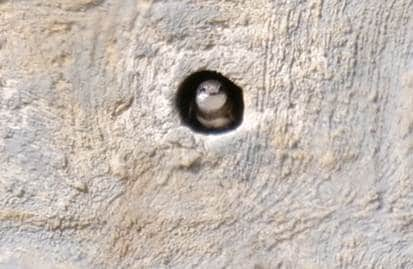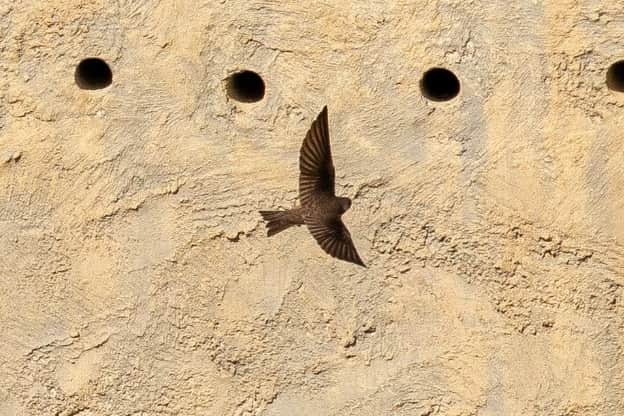Hopes high for Washington Wetland Centre's first nesting sand martins after birds seen in new artificial bank
and live on Freeview channel 276
Staff at Washington Wetland Centre are hopeful they will soon have their first ever nesting sand martins after the species has been observed flying in and out of the chambers at the centre’s artificial sand bank.
The centre created the artificial sandbank last autumn (2023) in the hope of attracting over 100 nesting pairs this spring (2024).


Advertisement
Hide AdAdvertisement
Hide AdSand martins winter in parts of Africa and migrate north back to our shores in late March and April. They are a welcome sight and are seen as heralding the arrival of spring. The species has previously been seen seen feeding over the centre's Wader Lake where the birds have been observed trying to dig nesting chambers into the lakeside bank. However, due to the consistency of the soil they have had no known success.
The new artificial bank has been fitted with over 100 tubes, replicating the ideal natural nesting sites for sand martins.
Excitement is now building that the centre will have its first nesting pairs of sand pipers since opening 49-years-ago after the birds have been seen perched around the openings in the bank and even photographed inside the tubes.


Reserve Manager John Gowland said: “Sand martins are one of the first spring migrants to arrive on our reserve each breeding season and are a favourite with our visitors and members.
Advertisement
Hide AdAdvertisement
Hide Ad“We’ve tried several things to encourage sand martin to nest around Wader Lake in the past, including reshaping a section of the bank to create a naturally vertical wall. However, we now know the soil type wasn’t quite right for them.
“We’re hopeful the introduction of the new artificial bank will see some success for the species, and these early sightings are very encouraging. We’re keeping our fingers crossed that some choose to settle and breed here.”
The sand martin bank is part of on-going habitat management around Wader Lake, which over the last three years has already benefitted from desilting work, deepened water channels and more effective vegetation management.
This work is to improve the area to increase the variety of wildlife and enhance the visitor viewing experience.
Comment Guidelines
National World encourages reader discussion on our stories. User feedback, insights and back-and-forth exchanges add a rich layer of context to reporting. Please review our Community Guidelines before commenting.